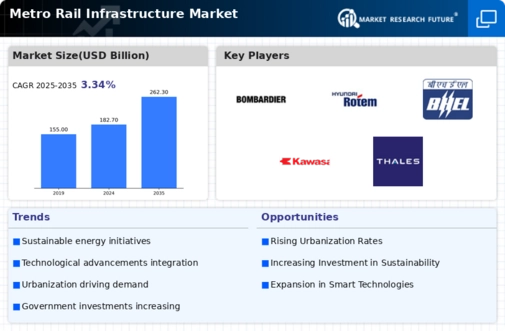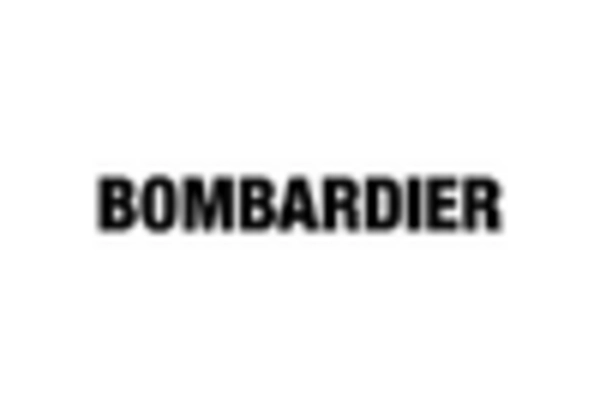Technological Innovations
Technological innovations are reshaping the Metro Rail Infrastructure Market. Advancements in automation, signaling systems, and energy-efficient technologies are enhancing the efficiency and safety of metro rail operations. For example, the implementation of smart signaling systems can improve train frequency and reduce delays, thereby increasing overall passenger satisfaction. Moreover, the integration of renewable energy sources, such as solar power, into metro rail systems is becoming more prevalent. This not only reduces operational costs but also contributes to sustainability goals. As technology continues to evolve, it is expected that metro rail systems will become more integrated with smart city initiatives, further driving the demand for innovative infrastructure solutions.
Government Initiatives and Funding
Government initiatives and funding play a crucial role in the Metro Rail Infrastructure Market. Many governments are prioritizing investments in public transportation to enhance urban mobility and reduce environmental impact. For instance, several countries have allocated substantial budgets for metro rail projects, with funding often exceeding billions of dollars. This financial support is aimed at developing new lines, upgrading existing infrastructure, and improving overall service quality. Additionally, public funding is frequently complemented by private investments, creating a robust financial ecosystem for metro rail projects. As a result, the collaboration between public and private sectors is likely to foster innovation and efficiency in the development of metro rail systems.
Urbanization and Population Growth
The rapid urbanization and population growth in various regions are driving the Metro Rail Infrastructure Market. As cities expand, the demand for efficient public transportation systems increases. According to recent data, urban areas are expected to house over 68% of the world's population by 2050. This trend necessitates the development of metro rail systems to alleviate traffic congestion and reduce travel times. Furthermore, the increasing number of commuters in metropolitan areas highlights the need for reliable and sustainable transport solutions. Consequently, investments in metro rail infrastructure are likely to rise, as governments and private entities recognize the importance of modernizing transit systems to accommodate growing populations.
Environmental Concerns and Sustainability
Environmental concerns are increasingly influencing the Metro Rail Infrastructure Market. The need to reduce greenhouse gas emissions and promote sustainable urban development is prompting cities to invest in metro rail systems. Metro rail is recognized as a cleaner alternative to road transport, as it significantly lowers carbon footprints. Recent studies indicate that metro systems can reduce emissions by up to 45% compared to traditional vehicles. This shift towards sustainable transportation is not only beneficial for the environment but also aligns with global efforts to combat climate change. Consequently, the emphasis on sustainability is likely to drive further investments in metro rail infrastructure, as cities strive to create greener urban environments.
Rising Demand for Efficient Public Transport
The rising demand for efficient public transport is a key driver of the Metro Rail Infrastructure Market. As urban populations grow, the need for reliable and fast transportation options becomes increasingly critical. Metro rail systems are often viewed as a solution to traffic congestion, providing a swift alternative to road travel. Recent surveys indicate that a significant percentage of commuters prefer metro systems due to their efficiency and reduced travel times. This growing preference is prompting cities to expand their metro networks and enhance service quality. Consequently, the demand for metro rail infrastructure is likely to increase, as urban planners and policymakers seek to meet the transportation needs of their populations.


















Leave a Comment